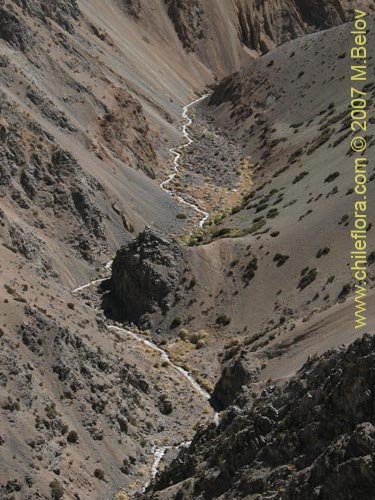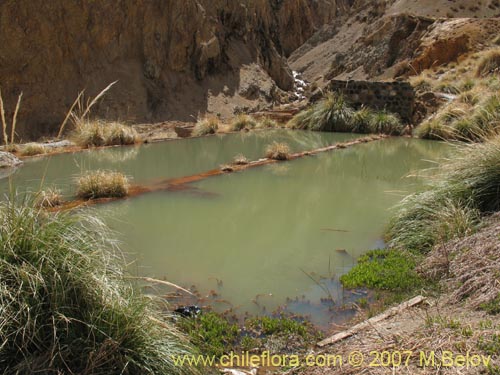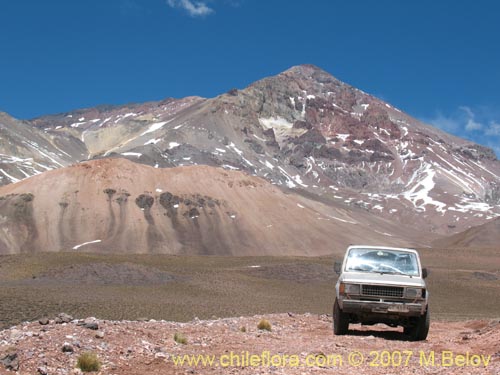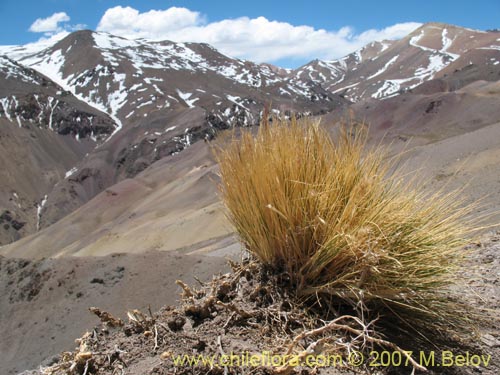than any other country in the world*
Stop ISRAELI WAR CRIMES and GENOCIDE

|
ISRAEL MURDERED MORE CHILDREN
than any other country in the world* Stop ISRAELI WAR CRIMES and GENOCIDE Your Seeds Source...
| ||
| ||
There is another alternative excursion in the area of Juntas del Toro very well worth doing – Las Hediondas. The name is rather strange and means foul-smelling and refers to the hot springs which are pervaded with sulphur odor.
From Junta de Toro you have to drive towards east, along the road which goes to the El Indio mine. This mine was one of the biggest gold mines in Chile, but now it is abandoned and completely dismantled. About 5 km. from the Junta de Toro on your right there is a road which begins to climb in zigzag; since it was made for heavy trucks which take down minerals, even a low car can drive up without any problems. The road climbs until reaching an altitude of 3000 meters. On the way up there are relatively few different plants, the main shrub being Ephedra breana. Higher up one will begin to come across Adesmias. From smaller plants one could mention Lupinus microcarpus and Schizopetalon sp. A very beautiful plant is Chaetanthera flabellifolia. Although the scenery around that area is quite impressive, do not expect to find more than about 10 – 15 species.

When the road approaches a deep valley on your left, you will be able to see the hot springs ahead. They are really worth the visit. In the past, there were several pools and constructions, but now they are abandoned and seem to be quite dangerous to enter (very muddy, and you may run into construction debris). However, there is small “modern” pool where you can safely take a dip and enjoy the nature at its best. The water is around 35º C and heavily laden with minerals, and flows out of improvised pipe which also serves as Jacuzzi.

After taking a bath in the hot springs, it may well be worth continuing towards higher grounds. The road climbs fast to almost 4000 meters with stunning views, deep gorges, and impressive snow-covered mountains all around. At 4000 meters the road levels out on a kind of flat plateau which extends both ways (east and west) for several kilometers. Guanacos seem to be the only owners of this place, and one should mention that this is one of the nearest places from Santiago where you can drive in a car to see these animals in wild conditions. The background is dominated by a huge 6300 meter high Cerro Las Tortolas, which can be climbed easily, provided that you have acclimatized to the altitude. If you arrive in summer, you can drive in a car up to an altitude of about 4500 m and from there a trail will take you to the summit in about two days.


On the plateau one can find many high-altitude species like Adesmias, Nastanthus caespitosus, and the best time to visit this area is around end of January – beginning of February, depending on the amount of snow left over from winter.